Make Your Own Upcycled Self-Watering Planter
Always forgetting to water your plants?
Try making this easy self-watering planter from used plastic bottles, perfect for busy individuals. Get your paintbrushes out to make this into a fun craft activity to do with your family.


What you need:
- A plastic bottle
- A pair of scissors
- A penknife (or any sharp tool like a screwdriver, hammer/nail)
- A 30 cm long piece of rope (or anything absorbent like twine, yarn, a strip of old cloth)
- Well-draining potting mix
- A plant, plant cutting or seeds
- Optional: Materials to decorate your planter (e.g. acrylic paint, twine, pebbles, glue)
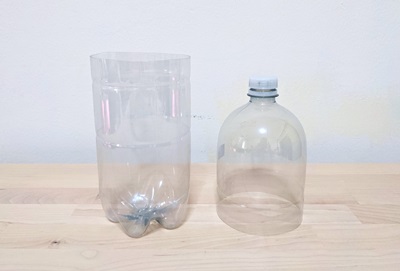
How to make the planter:
1. Cut the bottle horizontally along the centre. Ensure that there is sufficient depth for plant roots to grow in the top half of the bottle.
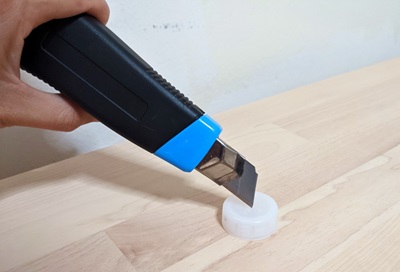
2. Remove the bottle cap and create a hole in the centre by using a sharp tool like a penknife. This hole needs to be large enough for the rope to fit through, but not too large that soil falls out.
Tip: Try poking the penknife tip in, then twisting the cap around, slowly shaving away layers of plastic (like a reverse pencil sharpener) to bore a hole through.
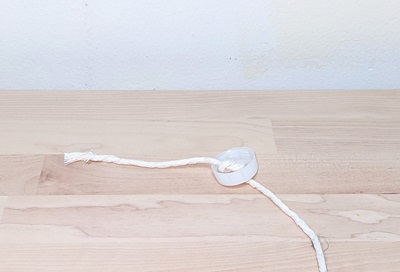
3. Thread the rope through the hole and knot it so that it does not slide through. Screw the cap back onto the bottle.
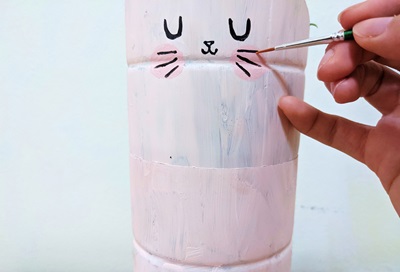
4. If you want to have a pretty planter, decorate your bottle before continuing.

5. Invert the top half of the bottle and place it into the bottom half. Ensure that the end of the rope is long enough to be submerged in water. The bottom half will act as a reservoir for the water.
Tip: Avoid gaps between the top and bottom halves to prevent mosquito breeding.
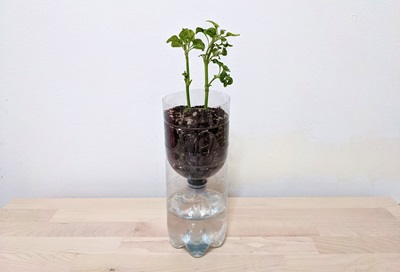
6. Fill the bottom half with water, and the top half with potting mix and place your plant. Water thoroughly for the first time after potting.
Tip: Make sure that the rope is not just coiled on the bottom but is buried partially in the soil. The rope acts as a wick which allows water to rise from the water reservoir to the soil by capillary action, keeping the soil moist.
And you are done! Customise your planters or use differently shaped bottles to put together your own low-maintenance home garden. Be sure to clean out the water reservoir every month to prevent the growth of algae.

Not sure what to grow? Here are some plants you can consider:
Ornamentals
- Silver Pothos (Scindapsus pictus)
- Wandering Jew (Trandescantia zebrina)
- Red Nerve Plant (Fittonia albivenis)
- Parallel Peperomia (Peperomia puteolata)
- Spider Plant (Chlorophytum comosum)
Edibles
- Basil (Ocimum basilicum)
- Laksa leaf (Persicaria odorata)
- Mint (Mentha spicata)
- Sawtooth coriander (Eryngium foetidum)
- Sissoo spinach (Alternanthera sissoo)
Gardening with Edibles
Since its launch in June 2020, NParks has distributed some 860,000 seed packets under the Gardening with Edibles programme. This is complemented with a slew of free online resources and workshops catering to gardeners of different skill levels. Through the programme, NParks aims to encourage the public to garden at home or in community and allotment gardens, as well as give them the opportunity to play a key role in the ownership and stewardship for nature as we grow our City in Nature, which will bring forth benefits of health and well-being.
The programme is also aligned with Singapore’s national strategy to strengthen our food resilience and reach the “30 by 30” goal led by the Singapore Food Agency. The Gardening with Edibles programme was established with the support of founding partners DBS Bank and Tote Board, as well as the Garden City Fund, a registered charity established by NParks. A second round of seed packet distribution was made possible by the programme’s partner Singapore Post Limited, through the Garden City Fund.
Gardeners’ Day Out
Participate from the comfort of your home with online activities such as talks and demonstrations, video tutorials of activities and promotions offered. Enjoy Gardeners’ Day Out online at www.nparks.gov.sg/GDO.
You can also enjoy videos of our Gardening With Edibles Masterclass Series. They are conducted by NParks horticulturists, focusing on unique and challenging edibles across different plant families.
Learning More
If you are a gardening newbie, visit NParksSG, our refreshed YouTube channel that serves as a one-stop repository for more than 500 video resources. It covers topics ranging from types of soil needed for your garden and how to plant, harvest and even cook your edibles.
For more information about the flora and fauna found in Singapore, please visit Flora and Fauna Web.
If you like what you read, follow us on Facebook, Instagram and Telegram to get the latest updates.
Text and photos by Kezia Tan
About the writer and photographer


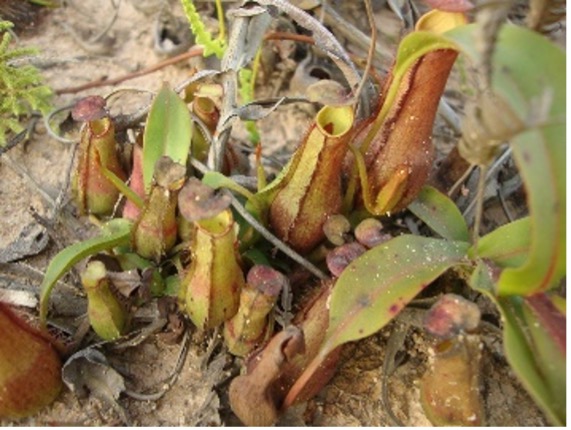


Have views or comments on this article? Let us know via this form. If you would like to give us feedback on any other areas relating to our parks and gardens, please submit via https://www.nparks.gov.sg/feedback